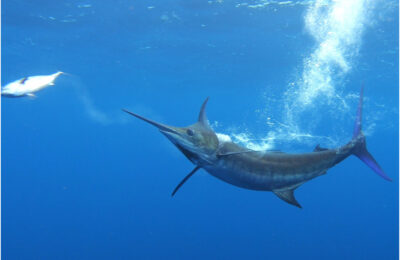David Righton, Håkan Westerberg,2 Eric Feunteun, Finn Økland, Patrick Gargan, Elsa Amilhat, Julian Metcalfe, Javier Lobon-Cervia, Niklas Sjöberg, Janek Simon, Anthony Acou, Marisa Vedor, Alan Walker, Thomas Trancart, Uwe Brämick, Kim Aarestrup. Empirical observations of the spawning migration of European eels: The long and dangerous road to the Sargasso Sea. Science Advances. 5 October 2016. DOI: 10.1126/sciadv.1501694.

Each year, eels migrate from rivers across Europe to procreate thousands of miles away in the Saragasso Sea (mid-North Atlantic). Their offspring then traverse thousands of mile back to the European continent. The mysterious arrival of droves of bright-eyed young eels has understandably captured the imagination of people since antiquity.
A century ago, the Danish Biologist Johannes Schmidt discovered the location of the spawning site of the European eel thousands of miles from home in the Saragasso Sea. Yet, to this day the nature of the eels’ epic journey—the “Eel Question” as coined by Schmidt—remains one of nature’s greatest mysteries.
It has long been assumed that eels that make a break for the spawning site either arrive in time for the spawn or don’t. That is, each year’s cohort of eels was thought to make a hasty migration to the spawning site to breed as group. Only those who arrived on time would participate in the spawn, and stragglers simply would not. However, according to a recent study appearing in Science Advances, this assumption might be flat out wrong. The state-of-the-art study conducted by a pan-European team of scientists invites a new narrative of eels taking their own sweet time getting to this year’s spawn-a-thon, or maybe next year’s—pourquoi pas?

Over the course of five-years, researchers tagged 707 female eels released from sites across Europe—Sweden, France, Germany, and Ireland—gathering data on swimming speed, swimming depth, and location. Naturally (or unnaturally) most of the eels fell off surveillance, either because of predation or because they gave their tags the slip (only about 12 percent made it out of the European continent). Nonetheless, this ambitious study revealed some of the first insights into the epic journey of the European eels. In particular, it showed that their migration was anything but a straight path to the spawning grounds. Although many of the eels converged at a site in the Azores, about half the distance to their spawning grounds (and as far as this study got), they took various routes to get there, meandering every which way at speeds that varied wildly from one individual to the next.
The apparently roundabout nature of the eel’s journey calls into question long held notions on the reproductive strategies of the European eels. While the timing of spawning was once thought to be “now or never,” this study suggests that eels stagger their arrival to the spawning locations with some showing up “on time”, while others arrive early for the next spawning cycle. The authors of the study speculate that a staggered arrival may be a sort of bet-hedging strategy that enhances the reproductive success of eel populations. A slower journey for some may also allow them to play catch up in their sexual maturation. Of course, alternative explanations exist, such as that the eels actually have multiple spawning sites (some closer some farther out), or that only the fastest eels succeed while the rest lose out.
The findings of this study invite further investigation into the migratory patterns of endangered European eels with potential implications for wildlife conservation management. While previous work relied on experiments measuring swimming speeds in laboratory swim tunnels, this report presents the first field data gathered from eels as they made their way to that special place oh so far away.
—
Further reading:
Schmidt’s seminal report published in Science magazine in 1923 is a delightful read.
Abrahim is a PhD student at Scripps Institution of Oceanography in San Diego where he studies marine chemical biology.

